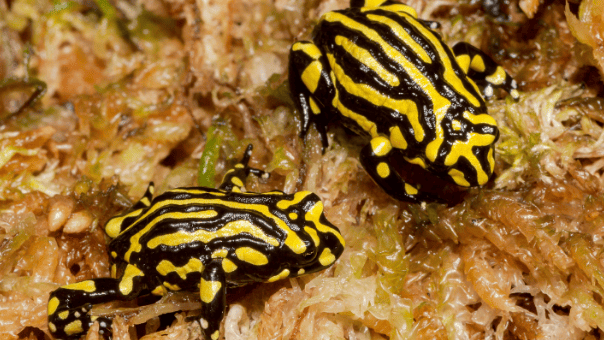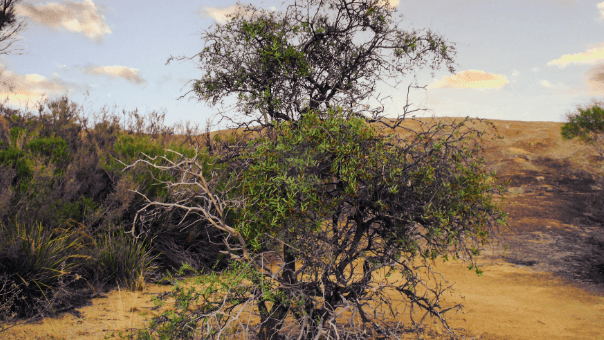
Reducing Deaths from Air Pollution
Exploreabout Reducing Deaths from Air Pollution
National scale biodiversity data, including species location, quantity, behaviour and habitat interactions, are critical for researchers and decision-makers to understand, manage and conserve sensitive species.
Sometimes data needs to be withheld or restricted to reduce the risk of harm to species, protect personal information, ensure Indigenous data sovereignty, avoid breaching legal or confidentiality agreements or manage biosecurity risks. For example, data on the location of the beautiful princess parrot may be restricted as it is a target for illegal collectors.
Biodiversity data has proliferated with the growth of big data and citizen science, as has the demand for easy access to the data.
The inability to access species data is a significant impediment to biodiversity analysis. About 45 per cent of Australia’s biodiversity data is withheld or restricted. This makes tasks such as developing a national plan for threatened species or assessing cross-jurisdictional bushfire vegetation recovery challenging.
States, territories and other data custodians such as Birdlife Australia, private conservation organisations, researchers and companies hold restricted access species data. Currently, species data must be requested directly from custodians, making it difficult and time-consuming to discover and access.

The Atlas of Living Australia (ALA), with co-investment from the ARDC, together with 13 other partners — including all state and commonwealth jurisdictions, research infrastructure and other stakeholder groups — collaborated widely to develop a national framework for managing and sharing restricted access species data.
The first-of-its-kind project also consulted with the community, government organisations, research agencies and non-government and industry bodies to streamline processes and systems, better define restricted access species data, agree on guiding principles, and improve data sharing processes and tracking.
“Collaborating with such a large group of partners was both challenging and rewarding,” said Cameron Slatyer, Project Manager – National Biodiversity Initiatives (Atlas of Living Australia), CSIRO. “We couldn’t have developed a successful national approach without engagement from the jurisdictions and across the biodiversity sector.”

The national framework is a non-legally binding document providing approaches and principles to safeguard sensitive species data, enable secure sharing, offer clauses to legal agreements, and ensure nationally consistent methods for modifying restricted access data for public release.
Project partners developed the framework through ongoing and broad consultation. It has undergone a FAIR audit (Findability, Accessibility, Interoperability, and Reusability of digital assets) and includes CARE principles (Collective Benefit, Authority to Control, Responsibility and Ethics) for Indigenous data governance.
“BirdLife Australia has long upheld a restricted access policy for sensitive species data as a basis for our citizen science work. This gives contributors the confidence that sharing their data will not put species at risk, while still allowing for its use in conservation. We are excited to now have a nationally consistent framework for sensitive species data sharing, which will massively increase the use and impact of bird and other species data in science and conservation”, said Dr Golo Maurer, BirdLife Citizen Science Program Leader.
“The ARDC provided valuable input on FAIR principles, access to communities of practice to mine ideas, and advice on cross-cutting issues needed to develop the framework. This was critical to the success of the project.”
Cameron Slatyer, Project Manager – National Biodiversity Initiatives (Atlas of Living Australia), CSIRO
To ensure the security of restricted access species data, the project developed a password-secured environment where data can be displayed and interrogated without being downloaded. Led by ARDC-supported project partner EcoCommons, this functionality has now been built into the new EcoCommons platform.

A data-sharing service was also developed by some of the project partners to streamline requests for restricted access species data. The data service does not hold or aggregate data. Instead, it connects users with data custodians using the service, provides an audit pathway to track request progress, captures metadata and provides a DOI for each request to ensure it is discoverable and reproducible.
“We developed an agreed nationally consistent set of data fields to enable the processing of requests at a national scale”, said policy officer Tania Laity, ALA. “The data service also allows users to request data from multiple custodians simultaneously.”
The project has developed approaches that suit government and non-government data users and custodians. It avoids duplicating existing processes and supports the data sovereignty of custodians.
Improved access, discoverability and sharing of restricted access species data benefits researchers, governments and industry. The result is better decision-making about the sustainable management, conservation and recovery of Australia’s sensitive and threatened species.
The collaborative and practical approach used to develop the national framework and service has not gone unnoticed. The Global Biodiversity Information Facility — an international network and data infrastructure — has recognised the value of the approach taken in this project, using learnings to improve the discoverability of international restricted access species data.
The ARDC’s Planet Research Data Commons will also champion these approaches to make government and industry environmental data more accessible for research.
Data custodians, Researchers, Application Developers and Project Managers are encouraged to adopt the framework principles in their policies and systems and use the data service:
Written by Sonia Bluhm, Scientell. Edited by Mary O’Callaghan. Reviewed by Jo Savill, ARDC; Cameron Slatyer and Tania Laity, ALA; and project partners.
The project received co-investment (doi.org/10.47486/PS027) from the ARDC, the Atlas of Living Australia, and CSIRO. The project was led by the Atlas of Living Australia, in partnership with the ARDC, CSIRO, NSW Department of Planning, Industry and Environment, NT Department of Environment and Natural Resources, the ACT Environment, Planning and Sustainable Development Directorate, WA Department of Biodiversity, Conservation and Attractions, SA Department of Environment and Water, Victorian Department of Environment, Land, Water and Planning, Tasmanian Department of Primary Industries, Parks, Water and Environment, QLD Department of Environment and Science, Australian Government Department of Agriculture, Water and the Environment, EcoCommons Australia, Pawsey Supercomputing Centre, The Western Australian Biodiversity Science Institute, and the Council of Heads of Australian Faunal Collections.